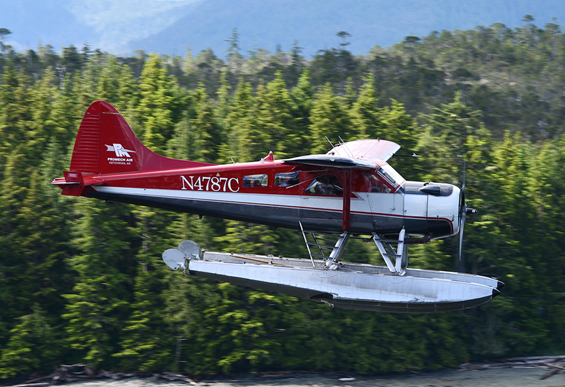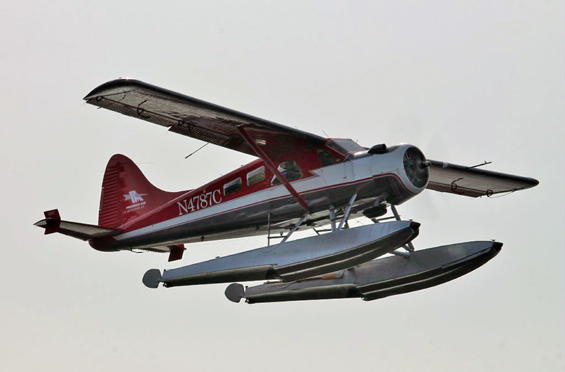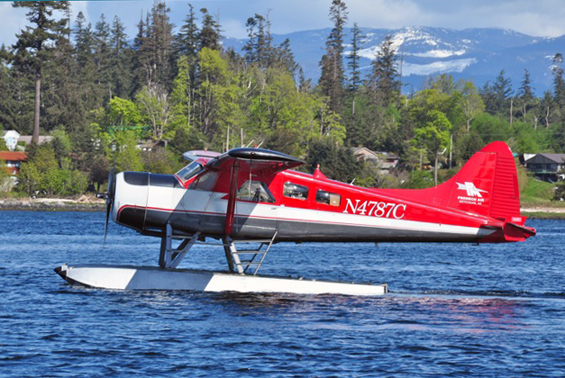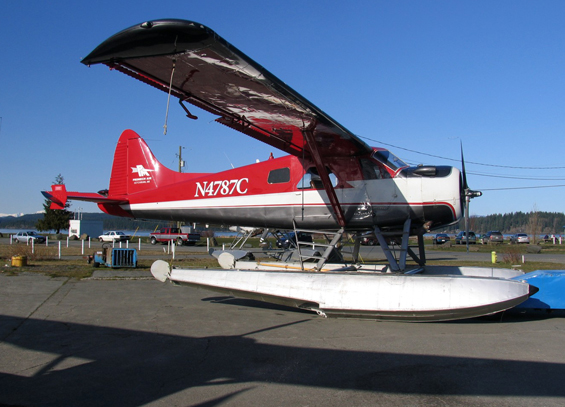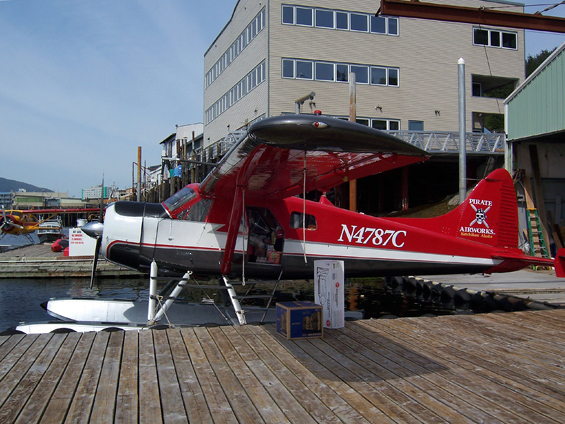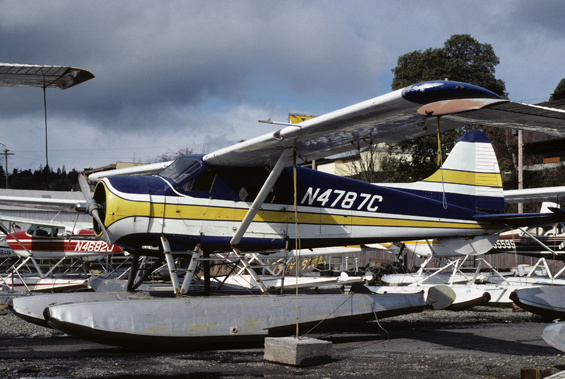• N4787C Sea Airmotive Inc., Anchorage, AK. Delivered 19-Jun-1959.
• N4787C Wien AK leased from Sea Airmotive. Circa 1964.
• N4787C Kenmore Air Harbor, Kenmore, WA. Dates unknown.
• N4787C Owned and operated by Promech Inc. dba Yes Bay Lodge, Yes Bay, AK. Regd Jun-1978
• N4787C Pro Mech Inc, Ketchikan, AK. Regd 25-Apr-1989. Canx 26-Mar-1992.On USCAR at 01-Oct-1994.
Accident: Ketchikan, AK. 26-Jul-1984. Pilot flew into a canyon with a climb out gradient in excess of the aircraft capability and collided with the up sloping terrain. Two passengers received fatal injuries; pilot and three passengers received serious injuries and one passenger received minor injuries. Aircraft reported as destroyed. NTSB report SEA84FA185
• N4787C Kevin Hack, Operated by Promech Air Inc., Ketchikan, AK. Circa Sep-1997 with Yes Bay Lodge logos circa 1995.
Accident: Ketchikan, AK. 29-Sep-1997. The float equipped airplane was observed taking off in light winds and calm water, and obtaining a steep climb and nose high attitude. Witnesses described hearing no reduction of engine noise from takeoff power to climb power. The airplane entered a steep left bank about 200 feet above the water, then rolled rapidly to the right and impacted at a steep angle into the water. The airplane had been modified with a Short Take Off and Landing (STOL) kit. Certification flight tests had determined that this modification eliminated aerodynamic warning of impending stalls, and therefore required an audible stall warning. Test results also required the addition of both a ventral fin, and horizontal stabilizer finlets, to meet directional stability certification. These tests determined that the least stable condition was in the takeoff flap configuration, during climb. The Supplemental Type Certificate (STC) for the modification required the ventral fin, and an audible stall warning system be installed. The manufacturer provided a marketing video, produced prior to the STC approval, which stated the stall warning system was not required in the U.S. The company indicated this tape was used for training, and was a basis for pilots routinely disabling the stall warning horn by pulling the circuit breaker. At the time of the accident, the airplane did not have the ventral fin installed, a takeoff flaps setting was selected, and the audible stall warning circuit breaker was in the pulled (disabled) position. The local FAA Flight Standards Office had inspected the accident airplane 14 times in the previous 29 months, and made no mention of the ventral fin not being installed. NTSB report ANC97FA159. A
• N4787C Merlys A. Hack, Ketchikan, AK. Regd 09-Mar-1999.
• N4787C Kevin Hack, Ketchikan, AK. Regd 11-May-2000. Canx 23-May-2008.
Note: In Pirate Airworks markings, Ketchikan, AK, May-2007.
• N4787C Dole Enterprises LLC., operating as PM Air, Ketchikan, AK. Regd 30-May-2008. Expired 31-May-2014.
• Crashed 24-Jul-2013 11:40 near Thorne Bay / Lake Galea, Prince of Wales Island
• 3 injured • NTSB Identification: ANC13LA068
Accident: Near Lake Galea, Prince of Wales Island, AK. 24-Jul-2013.
The pilot reported that, while the float-equipped airplane was in cruise flight about 1,200 ft above ground level, the engine made a loud noise and lost partial power, so he maneuvered the airplane to land on a nearby lake. During the approach, the engine lost total power, and the airplane descended into an area of trees before reaching the lake, which resulted in substantial damage to the wings, fuselage, and empennage.
The operator reported that the engine had been overhauled (zero-timed) 31 hours before the accident. A postaccident engine examination revealed metal fragments and heavy gouging damage to the rotating components within the crankcase. The bottom portion (crankshaft end) of the No. 1 linkrod and its respective bushing were missing from the No. 1 linkpin; the oil sump contained metal debris consistent with heavily damaged remnants of these (and other) components. The No. 2 cylinder barrel and linkrod and the No. 3 linkrod showed deformation to the left (in the direction of engine rotation). Based on the damage observed in the engine, it is likely that the event that initiated the engine failure involved either the the No. 1 linkrod bushing or the bottom portion of the No. 1 linkrod; however, the extensive damage to these components precluded determination of the failure mode.
The National Transportation Safety Board determines the probable cause(s) of this accident as follows:The failure of the No. 1 linkrod bushing or the bottom portion of the linkrod, which resulted in a total loss of engine power.
